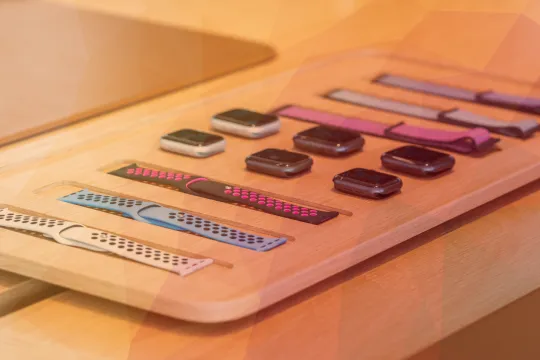
Credit: Apple
Yesterday, Apple held a presentation showcasing its latest technological achievements embodied in a rectangle thing made of recycled or renewable metals, plastics, and glass, weighing 7.99 ounces (227 grams). Alongside the iPhone 16 lineup which we talk, several other new products were introduced such as the new AirPods 4 and Apple Watch 10, confirming almost all the leaks we found. Let's take a closer look at what we can expect to see on the shelves shortly.
iPhone 16 and iPhone 16 Plus
The main highlight from Apple’s annual fall event, titled It’s Glowtime, was the announcement of the new iPhone models — the iPhone 16 lineup. These devices come with several important updates while keeping the familiar design of their predecessors.

One noticeable change is the vertical arrangement of the cameras on the back, which not only alters the look but also enables spatial photos for 3D viewing on the Apple Vision Pro. Apple has also introduced five new colors: ultramarine, turquoise, pink, white, and black.
The standard iPhone features a 6.1" screen, while the larger iPhone 16 Plus has a 6.7" display, matching the sizes and 60 Hz refresh rate of the iPhone 15 generation, as previously leaked. However, the screens of the iPhone 16 models can reach a peak brightness of 2000 nits and dim down to 1 nit. Additionally, the protective glass has improved significantly: the new ceramic shield is now 50% stronger than before and twice as strong as the glass on any other smartphone.

The key technological advancement in the new iPhones is the 3-nm A18 processor. This chip includes six performance cores and four energy-efficient cores. According to Apple, the CPU is 30% faster than the iPhone 15 processor and consumes 30% less energy. Meanwhile, the GPU is 40% faster and uses 35% less energy, which likely contributes to the significant boost in battery life for the iPhone 16.
The A18 also enhances gaming performance, making the iPhone 16 compatible with AAA games like Assassin’s Creed Mirage and Resident Evil 4, which were previously limited to the iPhone 15 Pro. Additionally, this processor doubles the speed for machine learning tasks and offers 17% higher memory bandwidth, improving support for Apple Intelligence features.
The camera system has seen major upgrades as well. It now comes with a 48-megapixel Fusion camera, a 2x telephoto lens, and a new 12-megapixel ultra-wide camera, which features an improved f/2.2 aperture for better low-light photography. Apple has also introduced a new generation of photographic styles to help users personalize their photos.

The iPhone 16 and iPhone 16 Plus now come with two new physical buttons. The first is the Action button, which was previously exclusive to Pro models. The second is a camera control button that lets users take photos quickly and access various camera features. A light press opens a simple camera interface with zoom options.
These new models also support video recording with spatial audio for playback on AirPods, Apple Vision Pro, and surround sound systems. The Audio Mix feature enables users to adjust sound after recording by changing spatial balance and improving noise cancellation.

Additionally, Apple has increased battery capacity and enhanced heat dissipation with a redesigned chassis. Prices start at $799 for the iPhone 16 and $899 for the iPhone 16 Plus. Pre-orders begin on September 13, and official sales start on September 20.
iPhone 16 Pro and iPhone 16 Pro Max
Alongside the "simple" iPhones, Apple has introduced the professional iPhone 16 Pro lineup. These flagship smartphones feature larger displays, with the iPhone 16 Pro and iPhone 16 Pro Max offering screen sizes of 6.3 and 6.9 inches, respectively, as confirmed by earlier rumors.

The iPhone 16 Pro models are powered by the A18 Pro chip, which includes a 16-core neural engine for impressive performance of Apple’s AI features, some of which will enter beta in October. Apple claims a 17% increase in memory bandwidth, a 20% improvement in 6-core GPU performance, and a 15% boost in 6-core CPU performance compared to the A17 Pro chip used in the iPhone 15 Pro.
Significant attention has been given to the camera in the iPhone 16 Pro series. It includes a main 48-megapixel Fusion Camera with optical image stabilization, a new 48-megapixel ultra-wide module with autofocus, and a 12-megapixel telephoto module with 5x zoom. Notably, even the "regular" iPhone 16 Pro now has a tetraprism in its telephoto camera, a feature previously exclusive to the iPhone 15 Pro Max.

As we mention above full iPhone 16 lineup includes a new Camera Control button, enabling users to adjust shooting settings like aperture and zoom. A software update later this year will also add a two-stage shutter. Apple is introducing new photo styles that can be changed after taking a picture. The iPhone 16 Pro models can record 4K video at 120 frames per second, with adjustable playback speed in the Photos app.
Additionally, Apple has enhanced the audio features in the iPhone 16 Pro, which now includes four "studio-quality" microphones. You can also capture spatial audio while recording spatial video. Later this year, a Voice Memos update will allow you to overlay a track onto your recordings, useful for music.

The iPhone 16 Pro smartphones feature titanium casings and come in four colors: black, white, natural, and a new "desert titanium." The 128GB iPhone 16 Pro is priced at $999, while the 256GB iPhone 16 Pro Max starts at $1199. Both models will be available for purchase on September 20, which is less than two weeks away.
The event also showcased the new AirPods 4 and Apple Watch Series 10. Additionally, Apple revealed updates for the operating systems—iOS 18, iPad OS 18, and the new macOS—set for September 16.
Detail-oriented editor aiming for excellence. I keep up with web dev, gaming, and tech trends in my free time and write about


